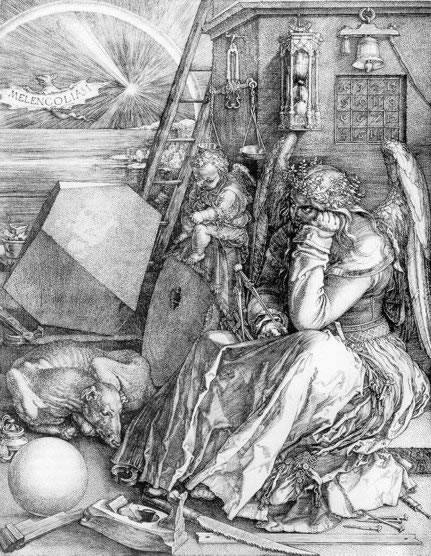My teacher (Ms. Casprowiak! What a wonderful name!) uses words like "partition" and "ostentatious" and phrases like "bisected quadrifoil arch" in everyday conversation. It is nice to be in a classroom where the teacher speaks like they are well educated along with being as such. Although much of the study is very dry, especially when looking at Byzantine and Gothic images, and the two hour and ten minute class period does not aid in the overall relief to it's dry nature, I find the entire class fascinating.
I was surprised at how gazing at many of these images really does send me where the artists often intended. Paintings depicting the morality of man (the lack of) give me such a sense of sadness toward our own depravity that I feel sick over it. Early Gothic and Renaissance paintings exploit this feeling so that the viewer will sense fear, being driven to repentance by the evil that one can clearly see before them. Other paintings that show the deposition (Christ's body being brought from the cross) also produce a great deal of sorrow. Composition in these works always draw the eye to our Lord- often with figures facing Him, background landscape leading toward Him, and placing Him toward the middle of the work. This emphasis on our Savior's death hits very closely to our emotions, whether we know our Savior or not, that one cannot help but be moved by it.
Although these works have flaws that I do believe have characterized the church as a place of gloom rather than glory, for a Christian saved by our Lord from these visions of death, I find them a beautiful representation of salvation- and Oh! The visions to be seen when this world is left behind!
I side tracked...
Now I intended to write on Durer... So I will... ;)
In his etching. "Melancholy," Durer depicts an angelic being who is supposed to represent the feeling, or disposition, of melancholy. At this time, as I wrote in my notes during class today, melancholy was associated with the artist's genius. Striving for perfection yet never attaining it brings a never-ending sense of failure for an artist that drives them toward making something incredible. This genius, however, lives up to its melancholy term. That sense of failure is ever present to an artist, and that imperfection must be dealt with on every level of art artists life, not just on the level of making art.
We all must deal with this imperfection. If one's sensibilities toward the arts are spurred by this melancholy, then that is just one way to experience a facet of melancholy. Songs, paintings, poems, books... There is so much that pours from this striving for perfection, and yet our imperfection is ever before us.
I wonder how we survive. Our dreams to create something flawless are fed by our knowledge that we can never bring it about.
I'm so glad Jesus is perfect.

1 comment:
Brilliance... You have a gift for showing me a perspective which awakens my dreams.
Post a Comment